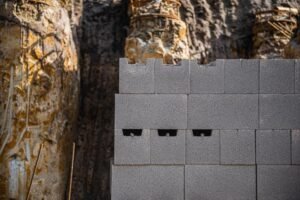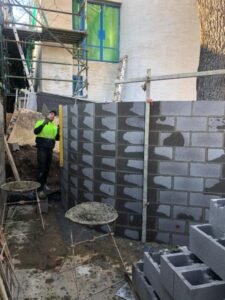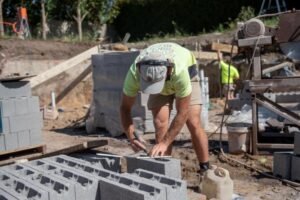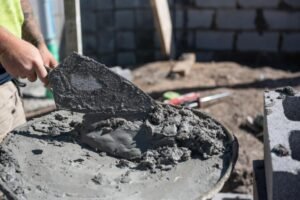The common mistakes to avoid in blocklaying are errors in mortar mixing, misalignments, ignoring weather implications, overlooking safety practices, and insufficient curing time. Ensuring the correct mortar mix ratio is vital for the strength and durability of the wall.
A Bayview blocklayer will tell you that precise alignment prevents structural issues down the line.
In this post, we’ll expand more on the common mistakes to avoid in blocklaying.
Errors in Mortar Mixing and Application
One of the most common mistakes in blocklaying involves incorrect mortar mixing. Using the wrong proportions of cement, sand, lime and water can weaken the bond. Consistency is crucial; a mortar mix that’s too dry or too wet won’t adhere properly.
Apply the mortar evenly to avoid weak joints. Always check the manufacturer’s guidelines for the correct mix and application techniques. Understanding the different types of blocks for blocklaying can also influence the mortar mix needed.
Misalignments and How to Correct Them
Misalignment of blocks can compromise the structural integrity. Use a string line to ensure straightness and a spirit level for vertical alignment.
If you notice a block is out of line, rectify it immediately by tapping it into place with a trowel handle or a rubber mallet. Continually checking alignment throughout the job prevents issues that are harder to fix later.

Ignoring Weather Implications
Weather conditions significantly affect blocklaying. High temperatures can cause rapid drying, weakening the mortar bond. Conversely, cold or wet weather can delay setting and curing times.
Cover your work during rain and protect it from direct sunlight on hot days. Plan your project around weather forecasts to avoid complications.
Overlooking Safety Practices
Safety should never be ignored in blocklaying. Always wear appropriate personal protective equipment, such as gloves, safety glasses, and steel-capped boots. Ensure scaffolding is stable and secure before starting work at height.
Keep your workspace tidy to prevent trips and falls. Regularly review safety procedures with your team to maintain a safe working environment.
Insufficient Curing Time
Allowing adequate curing time is essential for strong and durable structures. Rushing this process can lead to weak blocks and potential failure. Follow the recommended curing times for the specific types of blocks you’re using.
In residential blocklaying, this practice ensures the longevity and safety of the construction. Keep the newly laid blocks moist for several days to enhance the curing process and achieve optimal strength.
Poor Site Preparation
Skipping proper site preparation is a major pitfall in blocklaying. Starting with a level and clean foundation is crucial for stability. Remove any debris, roots, or loose soil from the area where you’ll be working.
Make sure the ground is compacted and, if necessary, use a concrete base or footing to provide extra support. Proper drainage should also be considered to prevent water damage over time.




